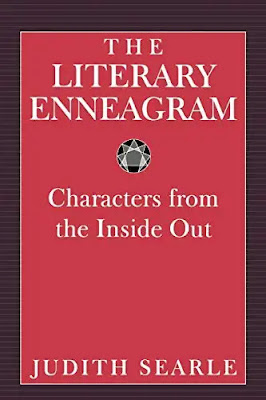The Enneagram: A Power Tool for Screenwriters
by Judith Searle
Judith Searle Books at Amazon
Experienced writers know that plot and character are like Siamese twins: if one is terminally diseased, the other is doomed. While a solid structure is essential to a good screenplay, it fails to guarantee characters whose behavior continually seems both inevitable and surprising.
The system of personality typing known as the Enneagram offers a powerful technical tool for developing original and dimensional characters. Familiarity with the nine basic types can help us sharpen conflicts between characters to make dramatic situations more compelling. Being aware of the connections between story genres and Enneagram types provides insights into why we are drawn to create thrillers, romantic comedies, science fiction or other kinds of stories.
THE NINE TYPES
The nine types are portraits of contrasting psychological attitudes, based on our habitual focus of attention and the fears that shape the ways we see the world:
* One (The Critic): principled, orderly, self-doubting, irritable. Ones fear being seen as evil or corrupt. (Example: Gregory Peck in ‘To Kill a Mockingbird’)
* Two (The Lover): nurturing, seductive, emotional, proud. Twos fear being unloved and unappreciated. (Example: Susan Sarandon in ‘Dead Man Walking’)
* Three (The Achiever): energetic, practical, driven, vain. Threes fear being seen as losers or failures. (Example: Tom Cruise in ‘Jerry Maguire’)
* Four (The Aesthete): authentic, passionate, depressed, envious. Fours fear being seen as ordinary. (Example: Meryl Streep in ‘Out of Africa’)
* Five (The Analyst): observant, independent, cool, stingy. Fives fear being overwhelmed by others. (Example: Ralph Fiennes in ‘The English Patient’)
* Six (The Pessimist): loyal, authority conscious, suspicious, fearful. Sixes fear being unsupported by others. (Example: Sally Field in ‘Norma Rae’)
* Seven (The Optimist): enthusiastic, egalitarian, self-indulgent, dilettantish. Sevens fear being deprived and in pain. (Example: Andre Gregory in ‘My Dinner with Andre’)
* Eight (The Trail-Blazer): forceful, confrontative, excessive, vengeful. Eights fear being in a subordinate position. (Example: George C. Scott in ‘Patton’)
* Nine (The Connector): accepting, generous, distractible, indolent. Nines fear conflict and disharmony. (Example: Frances McDormand in ‘Fargo’)
Films and literature offer a vast panoply of examples that can be examined with the tools of the Enneagram to reveal the dynamics of character. Once we understand how this system works, we hold the key to a more sophisticated understanding of ourselves and others. In my workshops, where I teach the nine types, primarily through film and literary examples, I emphasize that each type may be heroic or villainous.
Great characters are recognizable Enneagram types. Blanche DuBois (a Four), Willy Lohman (a Three) and Mary Tyrone (a Nine) all show distinctive character arcs that are predictable under the Enneagram system. Star actors often give their greatest performances as characters whose Enneagram type is the same as their own: George C. Scott in ‘Patton’ (Eight), Susan Sarandon in ‘Dead Man Walking’ (Two) and Sally Field in ‘Norma Rae’ (Six), to name but a few obvious examples. Thus, writers creating a character with a particular star in mind would be well advised to pay attention to that actor's personal Enneagram type.
Judith Searle began studying the Enneagram after two friends in succession suggested that its breakdown of nine personality types could be a valuable tool for her acting, writing and teaching. Now, after years of study and use, she has compiled an amazing book, ‘The Literary Enneagram.’ which provides actors, writers, teachers and the world at large with groundbreaking tools for human understanding, using character examples from great literature, stage and the movies. She also teaches the workshop, Judith Searle's 'Great Movies, Great Books and The Enneagram.'



.jpg)